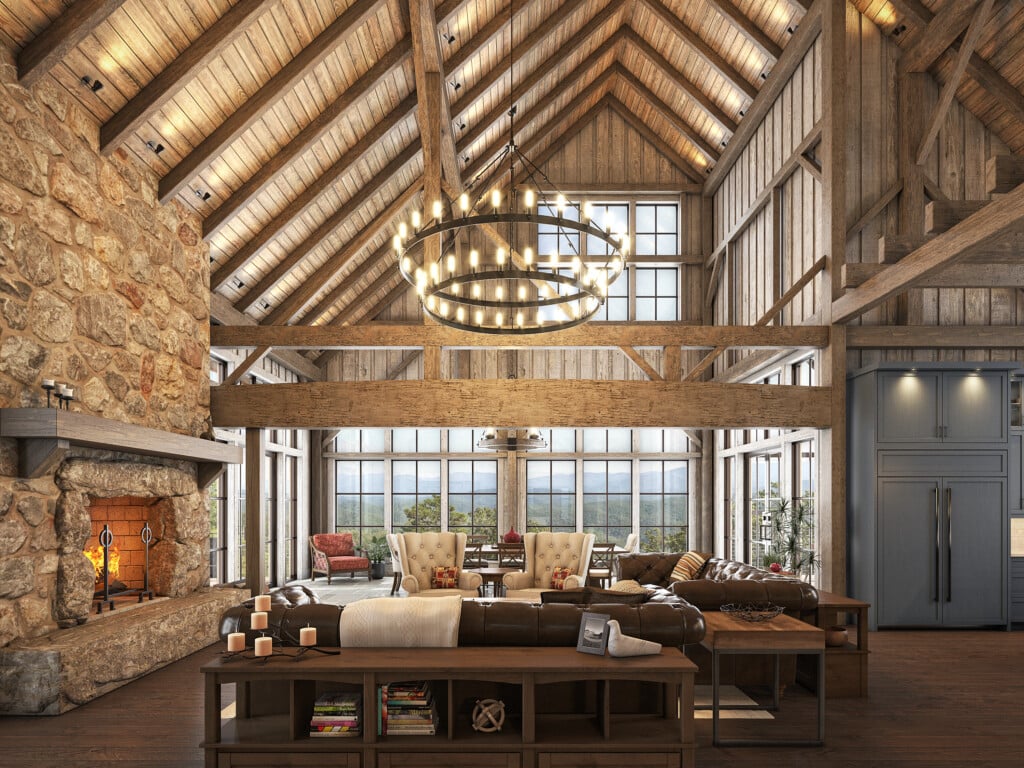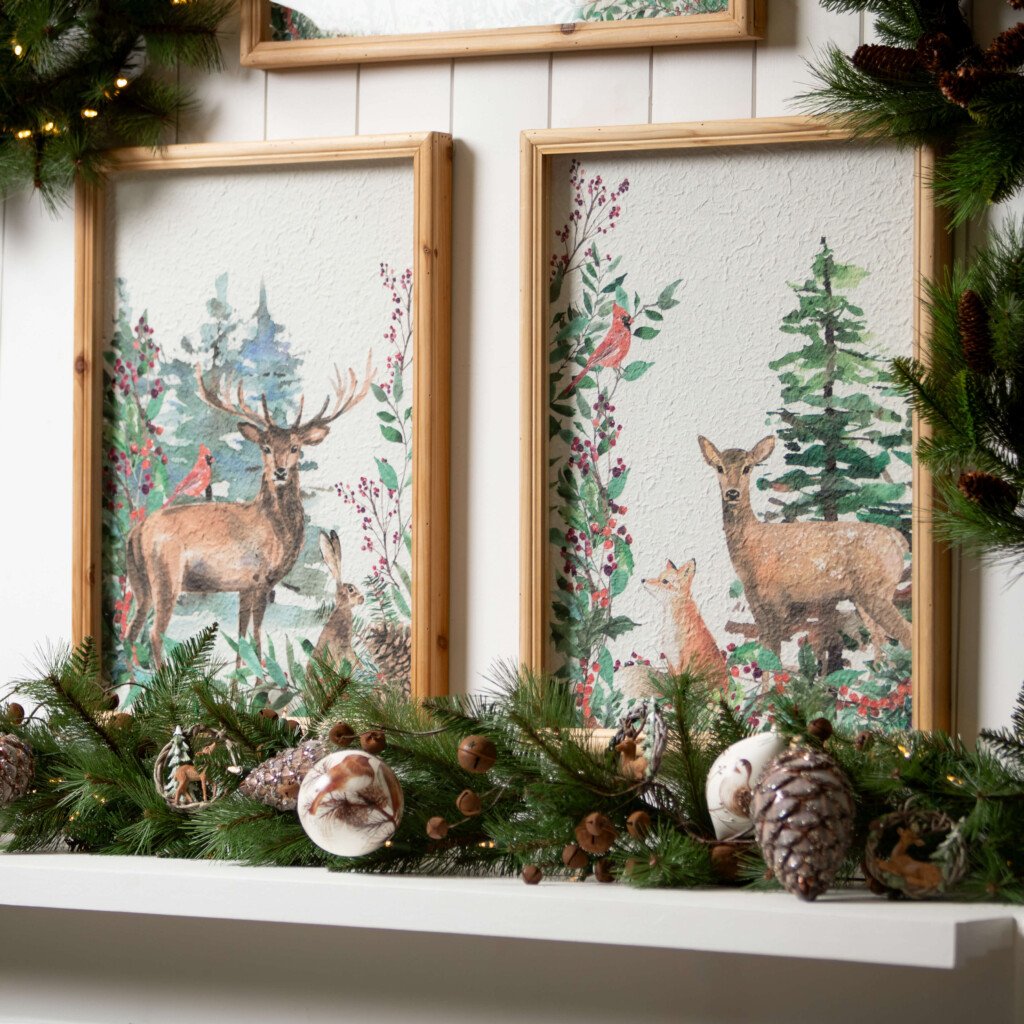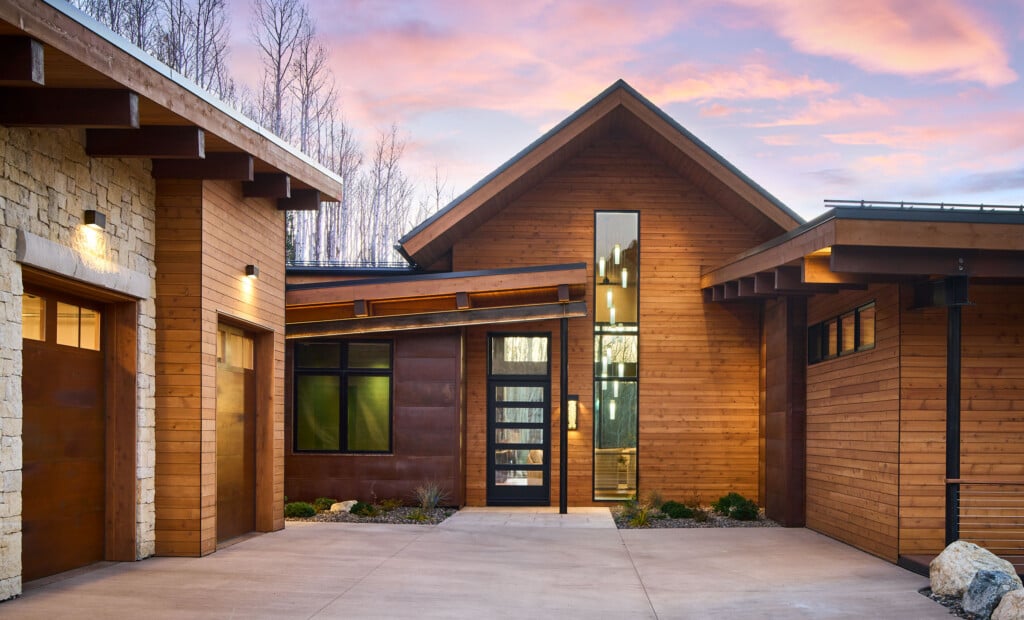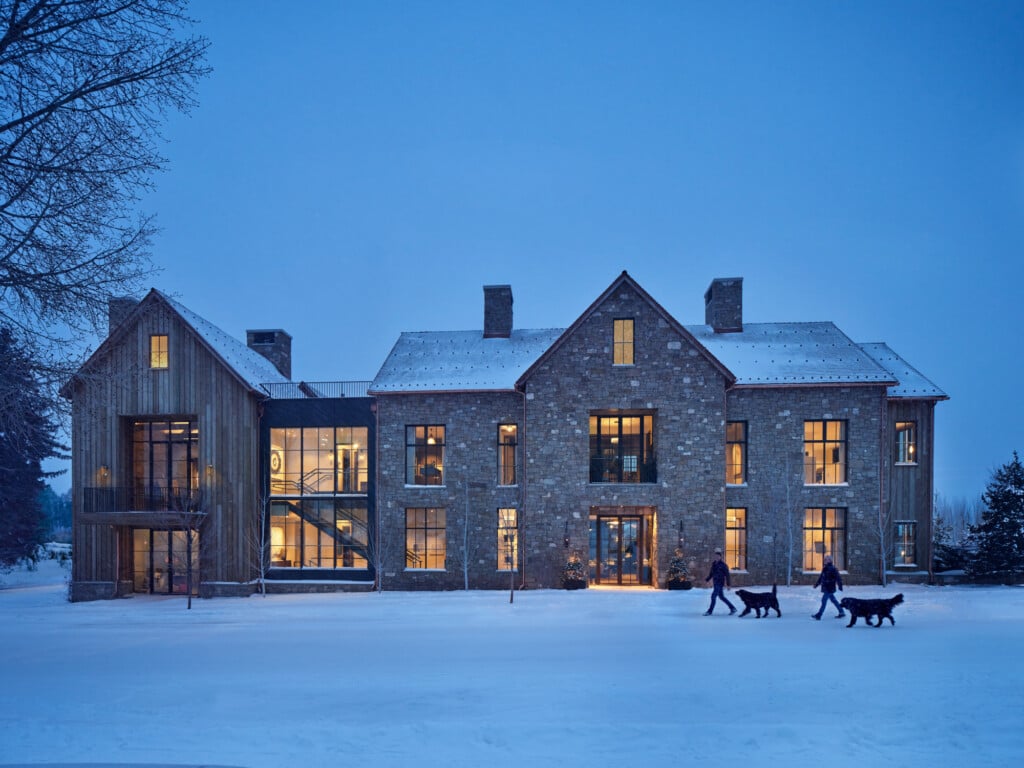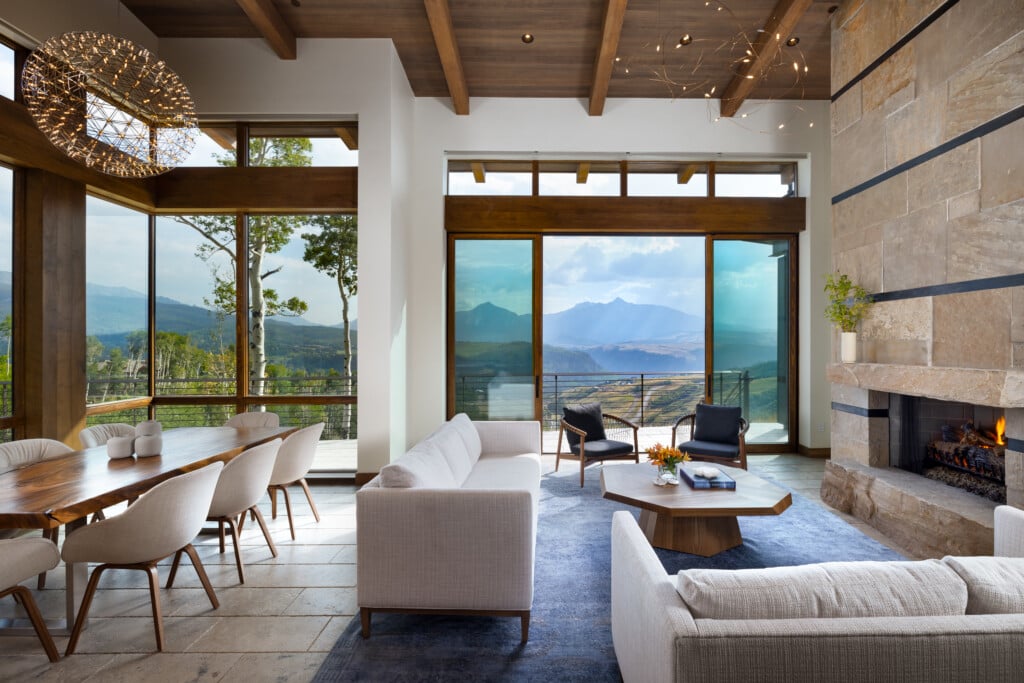What Architects Can Do in Response to Wildfires
Strategies that enhance a home's fire resiliency
With wildfires becoming an ever-increasing reality for homeowners, it’s essential for design professionals to do all we can to ensure that the homes we design are as safe as possible. Architects and builders are continually evolving their design and construction approaches to help homeowners face this complex challenge. From the property line to the living room, there are several ways to enhance a home’s fire resilience from day one.
Zone of Safety: Creating a natural buffer between an encroaching wildfire and your home

Strategies Used: Heavy timber, treated natural wood, and stone exterior materials; no flammable vegetation in defensible space Zone 1 and adequate spacing between trees in defensible space Zone 2. | Photo courtesy of TKP Architects.
Keeping the area around your house free of vegetation that is likely to catch fire is one of your home’s first defenses against wildfires. Architects work with local fire marshals and/or foresters to create a fire mitigation plan, dividing the property into three defensible space zones.
- Zone 3 consists of traditional forest management
- Zone 2 includes singular trees or clumps of trees/shrubs spaced with noncombustible materials in between
- Zone 1, the first 5 feet around a home within this zone, should be completely free of combustible materials, including patio furniture, firewood stacks, and flammable vegetation. Incorporating landscape rock, gravel, stone, and hardscape also helps reduce risk while creating a thoughtfully curated and aesthetically appealing buffer around the home.
Fire-Resistant Building Materials: Creating a defensive shell around your home

Strategies Used: Heavy timber, stone, and cementitious wood look siding materials; hardscape, stone and gravel landscaping.| Photo courtesy of TKP Architects.
In combination with fire-resistant underlayments, fire-resistant materials such as stone, stucco, brick and concrete can significantly boost fire resistance. Cementitious siding provides noncombustible alternatives in classic styles like board and batten, shingle, stucco, and wood plank, greatly enhancing a home’s resistance to wildfires.
For those who wish to use authentic materials and love the look of real wood for the exterior of their home, there are fire-resistant options. Heavy timber is naturally fire-resistant, and wood treated with flame retardant further enhances protection. Fire-rated roofing material and fire-wise roof venting also increase your home’s resiliency by preventing embers from infiltrating the outer layer of defense and igniting a flame on or within your home.
Fire Suppression Systems: A final line of defense
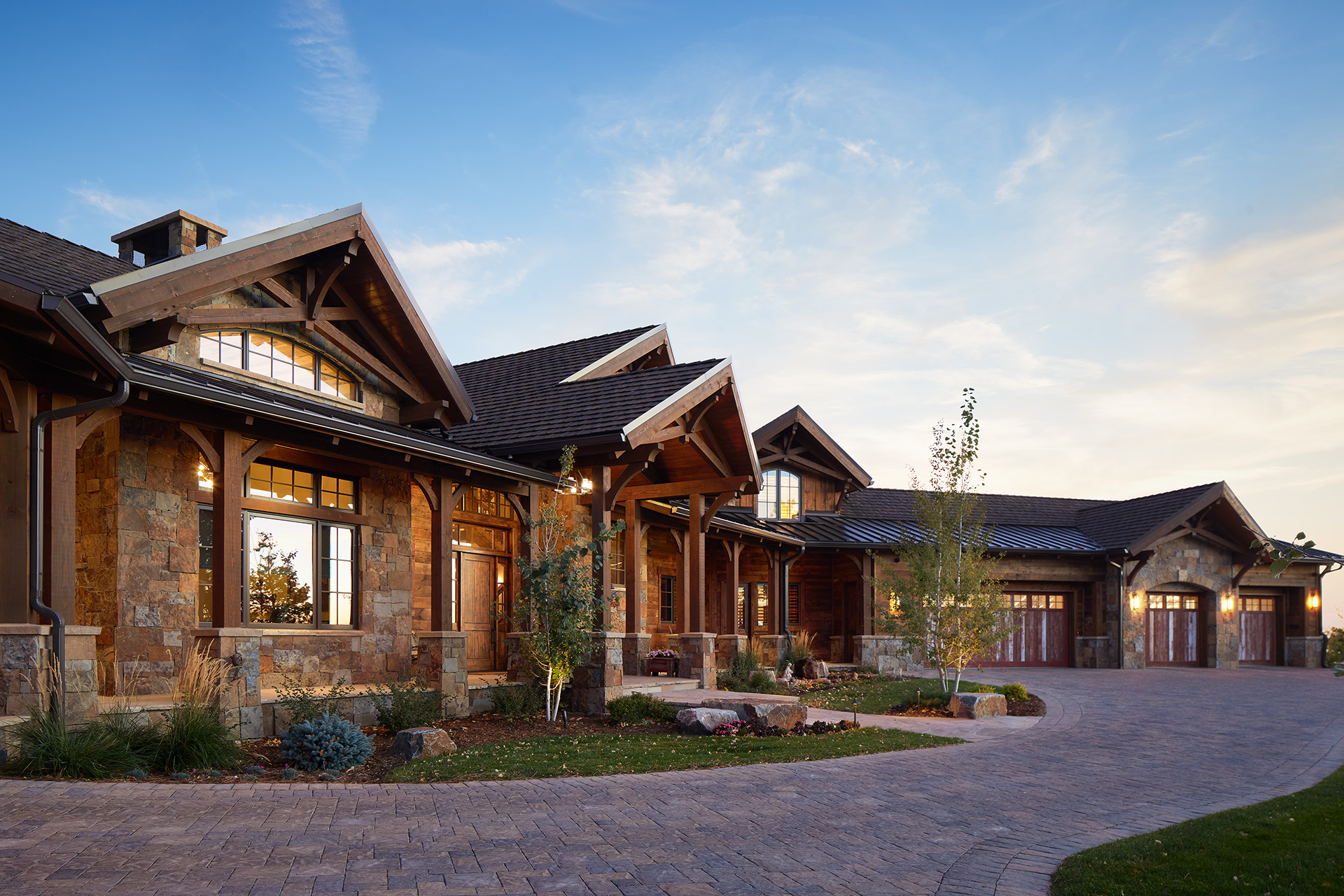
Strategies Used: Heavy timber and stone for exterior materials; Standing seam metal roof and asphalt shingles. | Photo by Eric Lucero.
Fire suppression sprinkler systems are often the final line of defense. New technology now includes exterior fire sprinkler systems that activate when wildfires approach, using a combination of water and flame-retardant foam to lower flammability. These systems can draw water from pools or hot tubs if the home’s water supply is cut off by firefighters during containment efforts.
Combining Strategies for maximum protection

Strategies Used: Sprinkler system; noncombustible landscaping surrounding the house; stone, cementitious stucco & siding exterior materials. | Photo by Mark Woolcott.
While implementing any one of these methods will help increase your home’s fire resistance, combining several will create a stronger and more effective defense. In addition, combining these strategies can lead to a smoother permitting process, increased insurability in forested areas, and greater peace of mind. While architects can’t prevent wildfires from starting, we can be an integral part of the team that helps protect your home and your family from them.
Nick Moskwa is a Project Manager at TKP Architects, an award-winning architecture firm based in Golden, Colorado. View TKP’s profile or contact TKP Architects at 303.278.8840.
Content for this article provided by TKP Architects.

